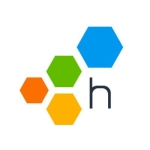We have multiple applications deployed in production across different technologies. We're using AppMon to monitor the services, the memory profiles, the traffic that comes through them.
It performs well. I have a team that works on configuring it, so they have a little bit of work ahead of them. It's not used across our development space, yet; so, not wide adoption.
It definitely helps, because my performance engineer, he can recreate a problem and he can give the developers what's happening, where to go look, all the information they need to be able to find what the root cause is.
The PurePath, being able to trace what's happening; to try to identify where the problems are and find the exact place to start looking.
We're thinking about moving to Dynatrace because AppMon is not scaling for us. One of the reasons I'm here at the Perform 2018 conference is to find out if there is a better way to use the product, not knowing that they were talking about the Dynatrace version. But to me, that's the logical place to go now.
So far, so good. Looks like Dynatrace is very simple to use. The sessions that we've been through here at the Perform 2018 conference, everybody has pretty much said installation is easy. Snap it in, a couple days later, you start getting information and you can put it right to use.
Scalability is the part that I'm looking forward to, because we're developing more and more microservices and, each time, for an AppMon license, you have to deploy it, you have to configure it, you to get charged for it. It's very time-consuming. Dynatrace is much easier, because it's auto-discovery.
We have a guardian that helps us. He's knowledgeable and gives us the right answers.
I think the role of AI, when it comes to IT's ability to scale in the cloud and monitor and manage performance issues, is huge. I have a directive to go to AI, shift left, go cloud, go microservice. All of that fits within a space where I don't have the resources to do that stuff manually, so let AI do it.
AppMon is our first APM solution. If we had one solution that could provide not only data, but real answers, if we deployed Dynatrace, and it got its own baselines, and then it told us, "We saw an anomaly, here's a problem ticket, somebody needs to look at that," that would be tremendous.
My most important criteria when working with a vendor are
- support
- usability
- stability of the products
- are they adopting to the upcoming technologies, because they're coming fast and furious?
And so far, it looks like Dynatrace is doing all of that.
I would rate AppMon about six out of 10 because it's hard to set up, you have to have somebody very knowledgeable in the product. It's not intuitive. Out of a couple hundred people, I probably have 10 that know how to use it.
In terms of advice to someone who is looking at implementing a similar solution, I would say: Know your technology stack, know your applications, know what the roadmaps are, so you can make sure that you're implementing the right product to support all that.

















